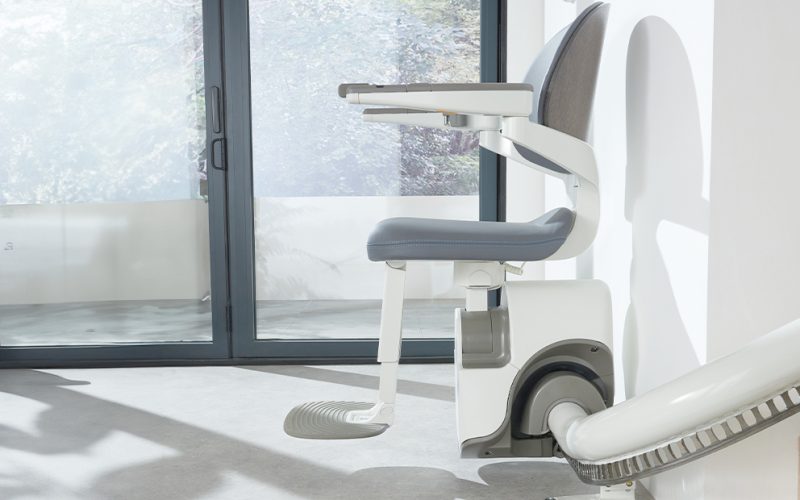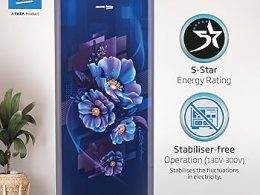When it comes to improving mobility and safety in your home, installing a stair lift can make a world of difference. For individuals with limited mobility, seniors, or anyone struggling with stairs, a stair lift offers an affordable and practical solution. However, with a variety of options available in the market, choosing the right stair lift can feel like a daunting task. To ensure that you make the best decision, it’s important to consider the specific features and factors that will suit your needs and the layout of your home.
In this blog, we will explore the key features you should look for when selecting a stair lift, to help you make an informed decision and improve your quality of life.
1. Type of Stair Lift: Straight or Curved
The first step in choosing the right stair lift is determining whether you need a straight stair lift or a curved stair lift. The type of staircase you have plays a significant role in this decision.
-
Straight Stair Lifts: These are designed for homes with straight staircases—meaning the stairs don’t curve or turn. They are typically more affordable and easier to install since the track runs in a straight line from the bottom to the top of the stairs.
-
Curved Stair Lifts: If your staircase has any kind of curve or landing, you’ll need a curved stair lift. These models are custom-made to fit the specific curves and turns of your staircase, and they provide a more tailored solution. However, they tend to be more expensive and take longer to install due to their customization.
Tip: Measure your staircase carefully to determine which type of stair lift fits your needs. If you’re unsure, ask for a professional assessment.
2. Weight Capacity
Different stair lifts come with varying weight capacities, and it’s essential to choose one that supports your weight. Most standard stair lifts can accommodate between 250 and 350 pounds, but if you require a higher capacity, many brands offer models that can handle up to 600 pounds.
If you or the person using the E50 stair lift are on the heavier side, make sure you opt for a model with an appropriate weight capacity. A reliable manufacturer will have clear weight guidelines, and opting for a model that’s rated for a higher weight capacity will ensure the lift operates smoothly and safely over time.
3. Seat Comfort and Size
Since stair lifts are designed for sitting, comfort should be a primary consideration. A comfortable seat will make the ride more pleasant, especially if the person using the lift has to use it multiple times a day.
-
Seat Cushion: Look for stair lifts with padded or cushioned seats for added comfort.
-
Adjustable Seats: Some models allow you to adjust the seat height, which can be helpful for different users.
-
Seat Width: Ensure the seat is wide enough for the user to sit comfortably without feeling cramped. Wider seats may also provide added safety for users with mobility aids, like a cane or walker.
-
Armrests and Footrests: Check for sturdy armrests and footrests that offer support and comfort while the person is using the stair lift.
4. Safety Features
Safety is the number one concern when selecting a stair lift, especially for seniors or those with limited mobility. Thankfully, modern stair lifts come with a range of built-in safety features to help prevent accidents and ensure secure usage.
Some of the most important safety features to look for include:
-
Seat Belt: A seat belt helps keep the user safely secured while riding up or down the stairs.
-
Swivel Seat: A swivel seat allows the user to easily turn and exit the stair lift at the top or bottom of the staircase without twisting their body awkwardly, which can reduce the risk of falls or strain.
-
Obstacle Sensors: Many stair lifts are equipped with sensors that detect obstacles in the lift’s path. These sensors will stop the lift if they detect something blocking the track, such as a piece of furniture or a stray object.
-
Safety Brakes: Stair lifts come with built-in safety brakes that stop the lift in the event of an emergency or malfunction.
-
Emergency Stop Button: Most stair lifts feature an emergency stop button that the user or a caregiver can press in case something goes wrong.
5. Power Options
Stair lifts typically operate on either AC (alternating current) power or DC (direct current) power. Understanding the power options is essential for making an informed decision:
-
AC-Powered Stair Lifts: These are powered by the home’s electrical supply and usually require an outlet near the top or bottom of the stairs. AC-powered models are generally less expensive but may continue to function during power outages only if there is a battery backup.
-
DC-Powered Stair Lifts: These stair lifts use rechargeable batteries that allow for continued operation even in the event of a power failure. DC-powered stair lifts are more expensive but offer peace of mind in case of electrical outages.
Tip: If power outages are common in your area, a DC-powered stair lift with a reliable battery backup is highly recommended.
6. Ease of Use
The stair lift you choose should be easy to use for the person who will be riding it. Look for the following features to ensure usability:
-
Simple Controls: A straightforward joystick or button control system should be easy to use, even for those with limited dexterity.
-
Remote Controls: Many stair lifts come with remote controls that allow users to call the lift to the top or bottom of the stairs without having to wait for it to come to them.
-
Automatic Folding: Some stair lifts have automatic folding seats, armrests, and footrests that can be tucked away when not in use, freeing up space on the stairs.
7. Installation and Maintenance
The installation process is an important aspect to consider when choosing a stair lift. Professional installation can ensure that your stair lift is securely attached to the staircase and operates safely.
-
Professional Installation: A reputable stair lift provider will send technicians to install your stair lift and offer a full assessment of your home.
-
Ease of Maintenance: Regular maintenance is essential to keep your stair lift in good working condition. Look for manufacturers that offer ongoing support and provide warranty options.
Tip: When purchasing, ask about the manufacturer’s warranty, and check for any additional maintenance packages available.
8. Design and Aesthetics
While functionality and safety are critical, the design of the stair lift can also make a difference in how well it fits into your home. Modern stair lifts are designed to be discreet and stylish, blending seamlessly with the décor of your home.
-
Track Color Options: Many stair lifts offer different track colors or finishes to match your home’s aesthetic. Some even offer custom track designs.
-
Chair Styles: Stair lift chairs come in various colors and materials (such as fabric, vinyl, or leather). Choose one that complements your existing home decor.
9. Cost and Financing Options
The price of a stair lift can vary widely, depending on the type, features, and customization required. On average, straight stair lifts cost between $2,000 and $5,000, while curved stair lifts may range from $10,000 to $15,000. In addition to the initial purchase cost, consider long-term maintenance and possible repair expenses.
Many companies offer financing options, payment plans, or leasing, so be sure to inquire about these options to find a payment structure that works for your budget.
10. Brand Reputation and Reviews
Lastly, consider the reputation of the brand and read reviews from previous customers. Opt for companies with a proven track record of delivering high-quality, reliable stair lifts. Customer testimonials and reviews can give you a good idea of the overall experience, from installation to maintenance.
Conclusion
Choosing the right stair lift for your home is an important decision that will affect your safety, comfort, and mobility. By considering factors like type, weight capacity, safety features, ease of use, and cost, you can find the perfect stair lift that meets your specific needs. Remember to do your research, ask questions, and consult professionals to ensure that you select the best stair lift for your home and lifestyle.
Investing in a stair lift not only enhances your independence but also helps you live in your home safely for many years to come.












